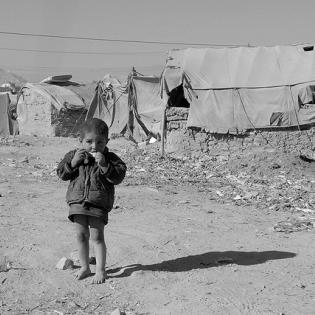Welcoming Refugees through Service-Learning
Young people investigate, plan, and facilitate a service-learning project that benefits refugees in their community.
Photo Credit: Refugees by Global Panorama is licensed by CC by 4.0
- research local organizations that support refugees and identify a need.
- coordinate a service project with the school, local community, and nonprofit organizations.
- reflect on the project and share the results with the community.
- UNHCR video, 2024. Who Helps Refugees?
- Learning to Give toolkit Immigration and Refugees
- Learning to Give paper Special Event Fundraising
- Learning to Give Lubna and Pebble Literature Guide
Instructions
Investigation
Watch the video: Who Helps Refugees?
Discuss unfamiliar terms (NGO, UNHCR, UN) and any known local organizations that support refugees. Brainstorm ways to help support refugees in your local area.
Work in groups to learn about several local organizations that help refugees. Each group chooses or is assigned to an organization to research. A list of potential community partners is included in LTG's refugee toolkit.
Brainstorm questions to ask the community partners to find out in what ways the organization helps refugees and what young people can do to help. This assures the action proposed fits the needs of the organizations. Young people contact the community partner, either by phone or by email. They ask the brainstormed questions and take notes to share with the rest of the group.
When each group has the information, the groups share with the others what they have learned about the community organizations, what they do, and what they need.
The whole group discusses the gathered information and decides on an community partner and a project it would like to undertake.
Planning and Preparation:
Once the class has decided on a project based on needs, the planning begins. Give young people ownership to manage the planning. They break down everything that will need to be done onto sticky notes. Together they place the sticky notes on a timeline and assign young people to different tasks. The young people manage the sticky notes and timeline and hold one another accountable.
Fundraising: If the group is collecting monetary donations, a good source for ideas and recommendations is in the handout below.
Collection Drive: Young people assign tasks to groups: a logistics group may be responsible to ask the principal if there is a place in the school where the items can be stored, as well as locate boxes and tables to store the items. A publicity group may be responsible for making fliers and communicating the need for items.
Advocacy: Once the group has selected a community partner and learned what it does to help refugees, brainstorm ways to let the community know about the need.
- What important things about refugees have you learned?
- In what ways can the community help? (For example, can they volunteer to tutor or provide transportation? Can they donate specific items?)
- How can you let the community know? (For example, make posters, hold a forum, and use social media.)
Volunteering: If the group is going off-site for a service activity, spend time setting norms and expectations for behaviors while outside the building and in the community. Allow youth to generate expectations for themselves and their peers.
If unexpected situations may occur during the service project due to its nature, anticipate these and role-play ahead of time.
Action:
Young people carry out their plan and document with journaling and photos. Reflect before, during, and after the action they take.
Reflection:
When the service project is complete, give young people time and a format to reflect.
- What is the most important thing you learned from this experience? Why?
- How will this experience change your outlook or action in other parts of your life?
- What, if anything, do you wish had gone differently?
- What questions do you still have?
Demonstration
If possible, share the results with the community. Have a student from the school newspaper interview young people about what they learned and write a story. If the project was a drive for items for refugees, invite a representative from the community partner to come and talk with the group, and let the local newspaper know about the event in advance.
Philanthropy Framework
-
Strand PHIL.IV Volunteering and Service
-
Standard VS 01. Needs Assessment
-
Benchmark E.2 Research the need in the school, neighborhood, local community, state, nation, or world.
-
Benchmark MS.2 Research the need in the school, neighborhood, local community, state, nation, or world.
-
Benchmark HS.2 Research the need in the school, neighborhood, local community, state, nation, or world.
-
-
Standard VS 02. Service and Learning
-
Benchmark MS.1 Select a service project based on interests, abilities and research.
-
Benchmark E.1 Select a service project based on interests, abilities, and research.
-
Benchmark HS.1 Select a service project based on interests, abilities, and research.
-
-
Standard VS 03. Providing Service
-
Benchmark MS.1 Provide a needed service.
-
Benchmark HS.1 Provide a needed service.
-
Benchmark E.1 Provide a needed service.
-
-
Standard VS 04. Raising Private Resources
-
Benchmark HS.3 Describe a detailed action for service.
-
Benchmark E.3 Describe a service plan.
-
Benchmark MS.3 Develop a service plan.
-
-
